Clover Weed in Australia: How to Identify and Eliminate It Safely & Effectively
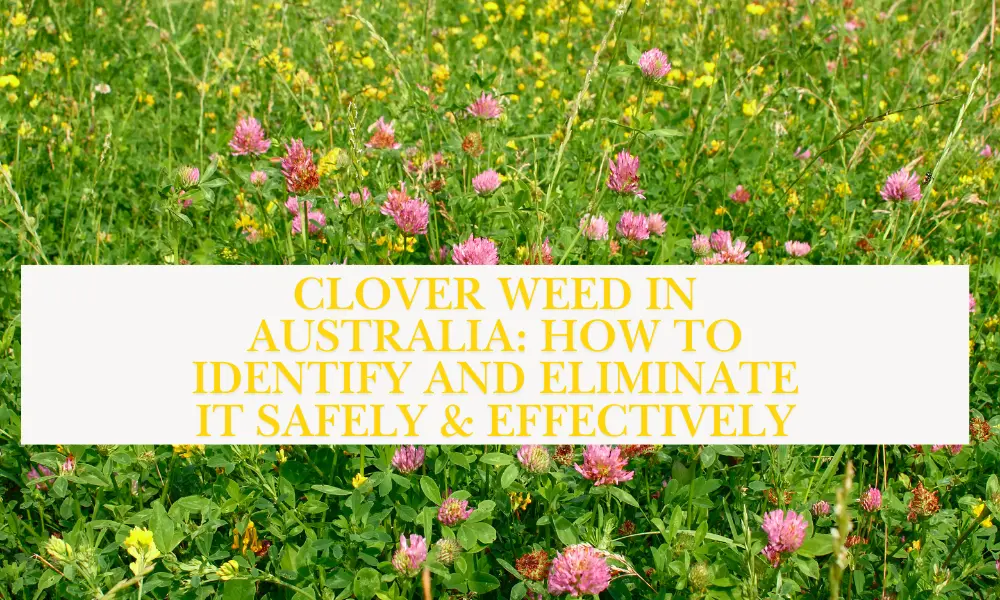
Clover Weed in Australia: How to Identify and Eliminate It Safely & Effectively
What is Clover Weed
Clover weed might look innocent with its small white or pink flowers, but for many Australian homeowners, it’s an unwelcome invader that can quickly take over a once lush, green lawn. Found across most regions of Australia, clover is a common weed that thrives in poor soil conditions and often signals an imbalance in your lawn’s health.
While some types of clover can improve soil by fixing nitrogen, most varieties become a nuisance when they crowd out turf grasses, attract bees to high-traffic areas, and create patchy, uneven lawn surfaces. If you’ve spotted clusters of three-leafed plants creeping across your yard, you’re likely dealing with clover weed — and it’s time to take action.
How to Identify Bindii Weed
How to Identify Clover Weed in Your Lawn
Clover weed is most commonly recognised by its distinctive three-leaflet pattern — but not all clover is the same, and not every three-leafed plant is clover. Here’s how to identify it accurately:
✅ Key Visual Traits of Clover Weed:
-
Leaves: Typically 3 oval-shaped leaflets (sometimes 4), each with a faint white “V” marking.
-
Growth Habit: Low-growing and spreading, forming dense mats.
-
Flowers: Small, ball-shaped clusters ranging from white to pink or red.
-
Texture: Soft, often slightly fuzzy to the touch.
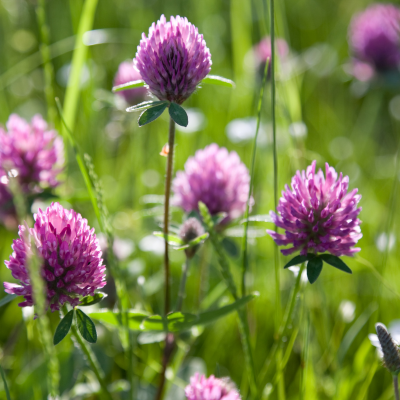
Strawberry Clover
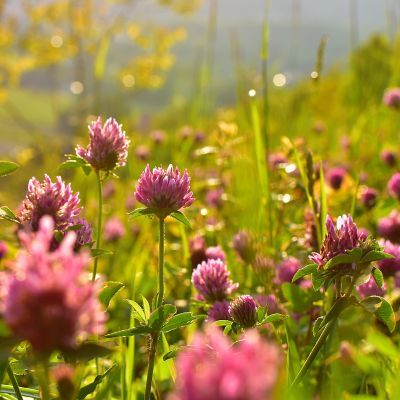
Red Clover
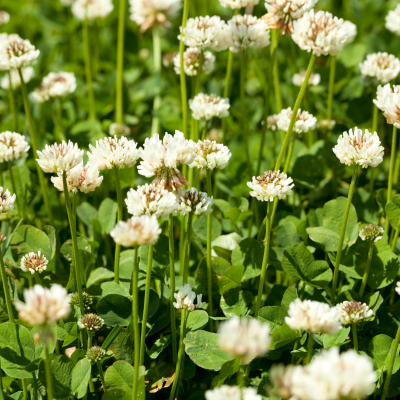
White Clover
Why Clover Grows in Your Lawn
🧪 1. Low Nitrogen Levels
Clover is a nitrogen-fixing plant, meaning it pulls nitrogen from the air and returns it to the soil. This gives it an advantage in lawns where the soil lacks sufficient nutrients. If your lawn is pale green or patchy in areas, it’s likely low in nitrogen — an ideal condition for clover to spread.
Tip: Lawns with balanced fertiliser routines are less likely to be invaded by clover.
💧 2. Compacted or Poor-Quality Soil
Turf grasses have shallow roots that struggle in compacted, clay-heavy, or poor-quality soil. Clover, on the other hand, has a more resilient root system and can flourish where other plants can’t.
☀️ 3. Under-Watering or Drought Stress
Clover is drought-tolerant and often outcompetes grass when water is scarce. If you have dry patches or areas with inconsistent irrigation, clover may quickly move in.
✂️ 4. Mowing Too Short
Cutting your grass too low can weaken the turf and expose bare soil — the perfect environment for clover seeds to germinate. Clover can thrive at lower heights where grass can’t compete.
🧼 5. Lack of Regular Lawn Maintenance
Neglecting to overseed, fertilise, or aerate your lawn opens the door for hardy weeds like clover to spread. A well-fed, thick lawn is your best natural defense.
Natural Methods for Clover Weed
🛠️ 1. Manual Removal
Pulling clover out by hand is highly effective for small patches, especially when the soil is moist. Make sure to remove the entire root system, or it may regrow quickly.
Best For: Small infestations or isolated patches.
🍶 2. Vinegar Solution Spray
A DIY clover-killer can be made using household vinegar, which dries out the clover leaves.
DIY Recipe:
-
1 part white vinegar
-
1 part water
-
A few drops of dish soap (helps it stick to leaves)
Spray directly onto the clover on a sunny day. Avoid surrounding grass — vinegar is non-selective and may damage it.
⚠️ Caution: Best used for spot treatments only.
🌱 3. Mulching Bare Areas
If you have garden beds or open soil patches where clover is sprouting, applying a thick layer of mulch blocks light and oxygen, preventing clover seeds from germinating.
Tip: Use bark mulch or sugar cane mulch for added moisture retention and soil health.
🪴 4. Corn Gluten Meal
Corn gluten meal is a natural pre-emergent herbicide that stops clover seeds from sprouting. It won’t kill existing clover, but it’s useful as part of a prevention strategy after removal.
Best Applied: In early spring or autumn before seed germination.
🧼 5. Improve Lawn Health Organically
Clover often invades stressed lawns. Natural fertilisers like seaweed-based or compost tea can help build soil health without synthetic chemicals.
Chemical Options for Clover Weed
🧴 Yates BuffaloPro Weed ‘n’ Feed
-
-
Type: Hose-on liquid selective herbicide with fertiliser
-
Targets: Clover, bindii, dandelion, and other broadleaf weeds
-
Suitable For: Buffalo, Couch, Kikuyu, and other common lawns
-
Active Ingredients: MCPA, Dicamba, and Iron
-
Coverage: Up to 120 m² per 2L bottle
Why Choose It: Yates BuffaloPro combines a selective weed killer with a fast-acting lawn feed, making it a convenient two-in-one solution. It not only targets broadleaf weeds like clover, but also greens your lawn in the process.
Easy to Use: Just attach to your hose and spray. Great for weekend gardeners looking for quick, visible results without mixing chemicals or measuring doses.
-
🧪 Amgrow Bin-Die Selective Lawn Weeder
-
-
Type: Concentrated selective herbicide
-
Targets: Clover, oxalis, bindii, catsear, and more
-
Suitable For: Buffalo, Couch, Kikuyu, QLD Blue Couch, and other lawn types
-
Active Ingredients: MCPA, Dicamba, and Bromoxynil
-
Coverage: Treats up to 200 m² per 250mL bottle
Why Choose It: Bin-Die is a trusted name in selective weed control. It’s designed specifically for home use, offering effective removal of clover and other broadleaf weeds without damaging your lawn. It’s especially safe for sensitive lawn types like Buffalo.
Best Used: During active weed growth. Reapply after 7–10 days if clover persists.
-
🧪 Bow & Arrow Herbicide 250mL
-
Type: Professional-grade selective herbicide
-
Targets: Clover, bindii, dandelion, catsear, and other broadleaf weeds
-
Suitable For: Couch, Kikuyu, Buffalo, and other common lawn types
-
Active Ingredients: Bromoxynil, MCPA, and Dicamba
-
Coverage: Treats up to 400 m² per 250mL bottle
Why Choose It: Known for its fast knockdown and long-lasting results, Bow & Arrow is widely used by turf professionals. It’s tough on clover but gentle on your lawn when used as directed.
Pro Tip: Apply during active weed growth (spring or autumn) and avoid mowing for a few days before and after application for best results.
🧴 Cutlass M Herbicide 20L
-
Type: Broad-spectrum selective herbicide (commercial-grade)
-
Targets: Clover, thistles, capeweed, chickweed, and more
-
Suitable For: Agricultural turf, sports fields, and large-scale lawns
-
Active Ingredients: MCPA and Dicamba
-
Coverage: High-volume — ideal for acreage and professional lawn care
Why Choose It: Cutlass M is ideal for larger lawns or commercial use. It offers excellent value per litre and provides effective, reliable control of a wide range of broadleaf weeds including persistent clover.
Use With Caution: This is a powerful concentrate intended for experienced users. Always follow label directions and wear protective gear during application.
🧴 Amgrow Multi-Weed All Purpose Lawn Weeder 250mL
-
Type: Selective lawn weeder (concentrate)
-
Targets: Clover, dandelion, thistles, bindii, capeweed, and more
-
Suitable For: Buffalo, Couch, Kikuyu, QLD Bluegrass, and other lawns
-
Active Ingredients: MCPA, Dicamba, and Bromoxynil
-
Coverage: Treats up to 200 m² per bottle
Why Choose It: A versatile all-rounder perfect for home lawns, this weed killer offers balanced broadleaf control while being safe for most Australian lawn varieties. Clover doesn’t stand a chance with this in your shed.
Ideal For: Spot treatment or full-lawn application with a handheld sprayer.
Recommended Products
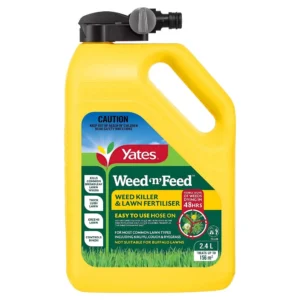
Yates Weed ‘N’ Feed Hose on
$18.90Quinstar 200SC 5L
$439.00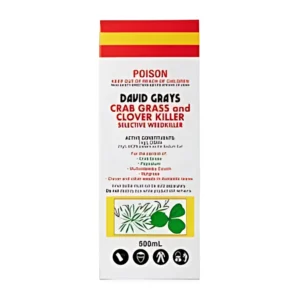
🌿 Is clover really a weed?
Yes — in most Australian lawns, clover is considered a weed because it spreads quickly, competes with turfgrass, and disrupts the appearance of a uniform lawn. However, some people see benefits in clover due to its nitrogen-fixing abilities.
🐝 Is clover bad for bees?
Actually, it’s the opposite — clover flowers are a popular food source for bees. If you’re removing clover, avoid spraying herbicides while it’s in bloom, and consider planting other pollinator-friendly plants nearby to help support local bee populations.
⏳ How long does it take to kill clover weed?
With a selective herbicide, clover may begin to wilt within 7–10 days, but it can take 2–3 applications over a few weeks to fully eliminate it. Natural methods may take longer and require more persistence.
💧 Does clover mean my soil is healthy?
Not exactly. Clover grows well in low-nitrogen or compacted soils, which typically signals that your lawn needs improvement — not that the soil is thriving.
🧴 Can I prevent clover with weed and feed?
Yes, many weed & feed products contain selective herbicides that prevent clover from returning while fertilising your lawn. Regular use can help suppress new growth and strengthen turf health.
🪴 Why does clover keep coming back?
If you haven’t addressed the root causes — such as low nitrogen, bare patches, or poor mowing practices — clover will likely return. Ongoing lawn care and consistent feeding are key to keeping it away for good.
For more on weed control standards and species guidelines, visit the NSW Department of Primary Industries.
View our Range of Concentrated Weed Killers.

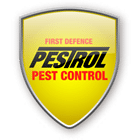

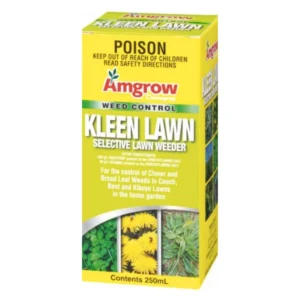
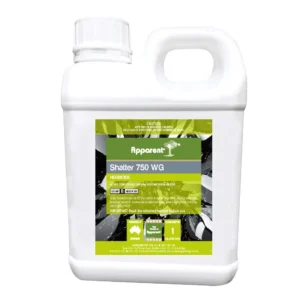
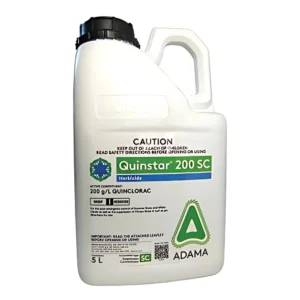
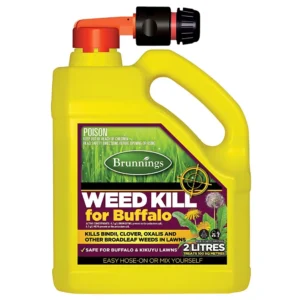
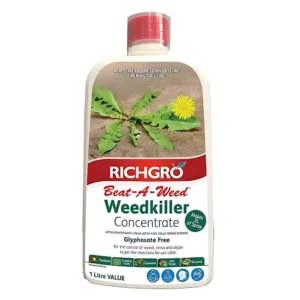
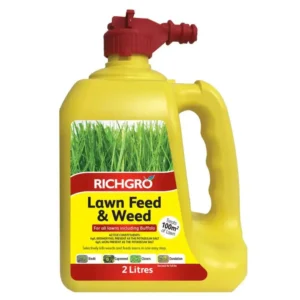
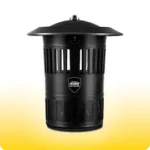 Mosquito Traps
Mosquito Traps